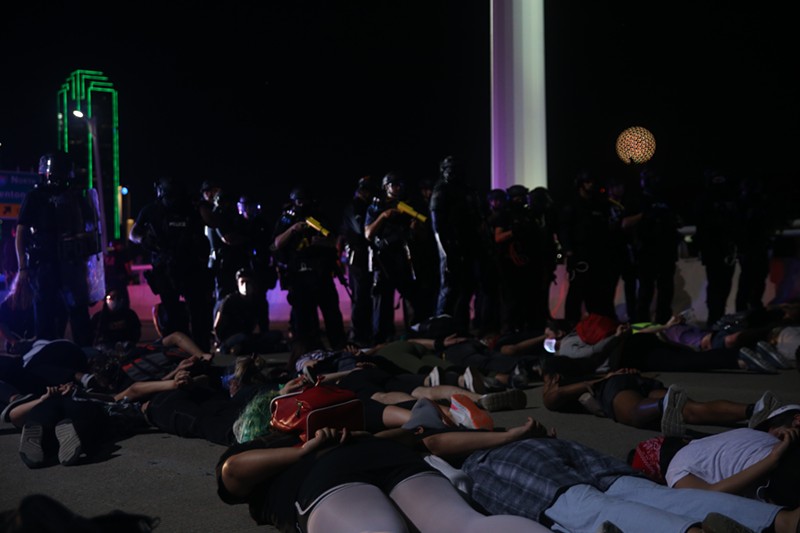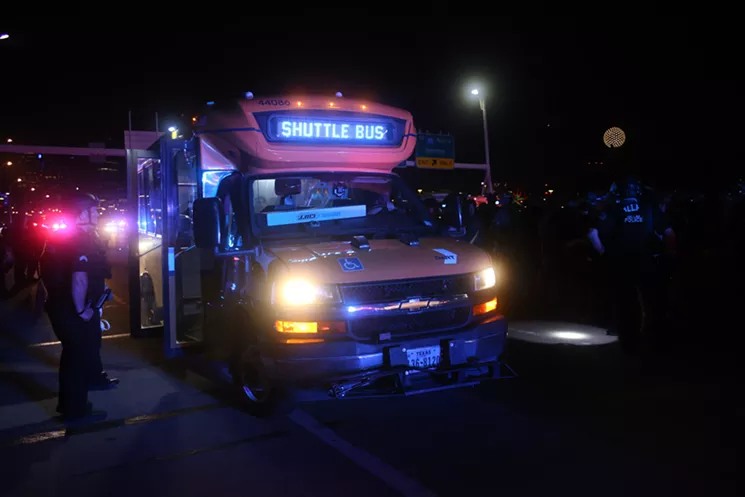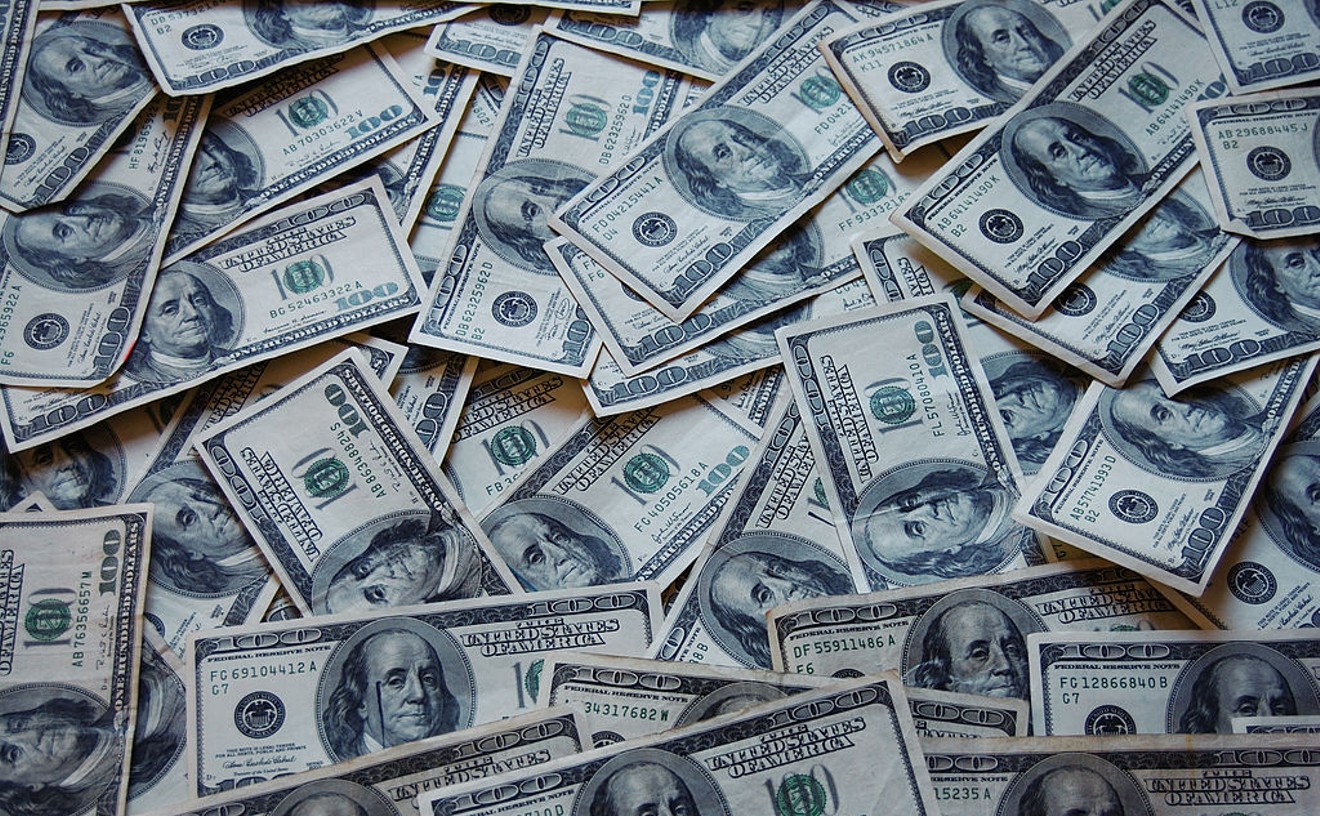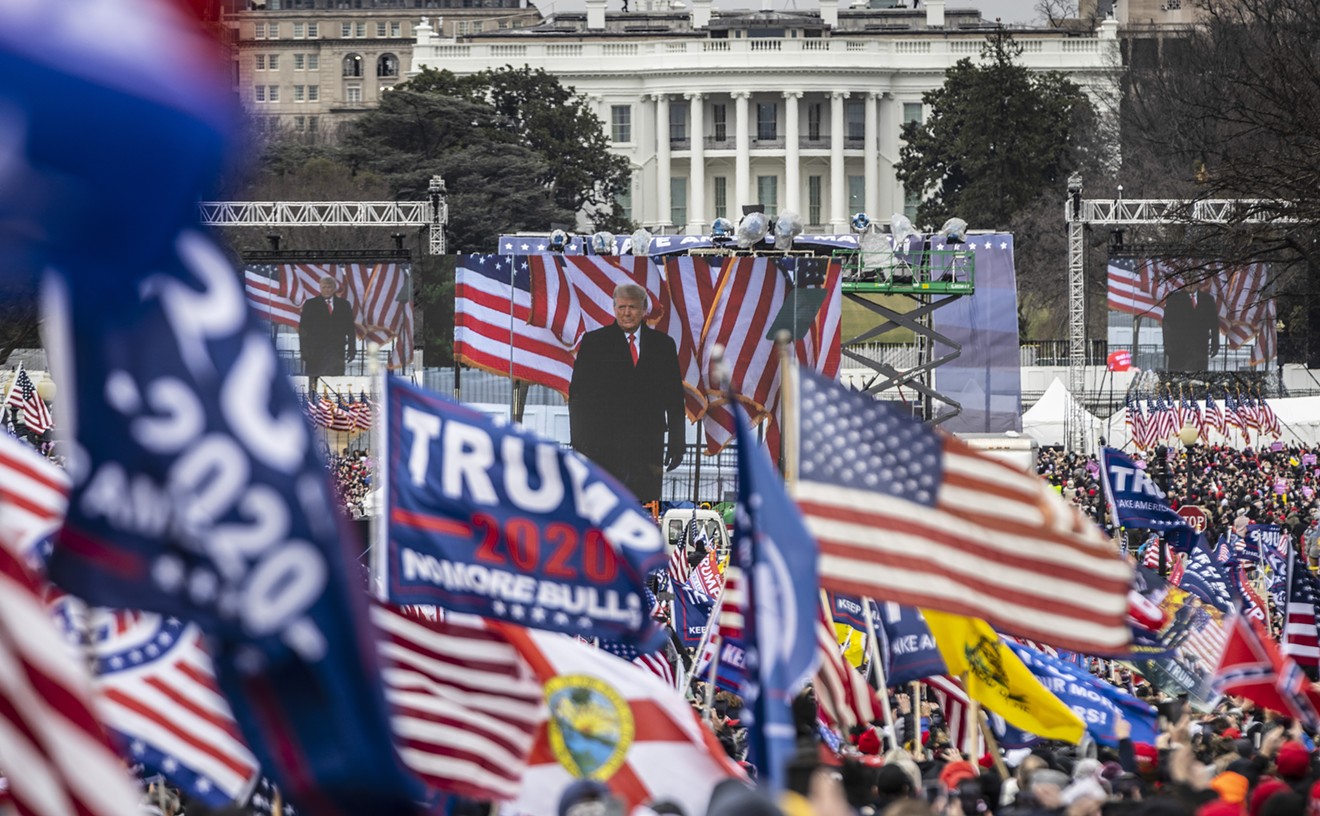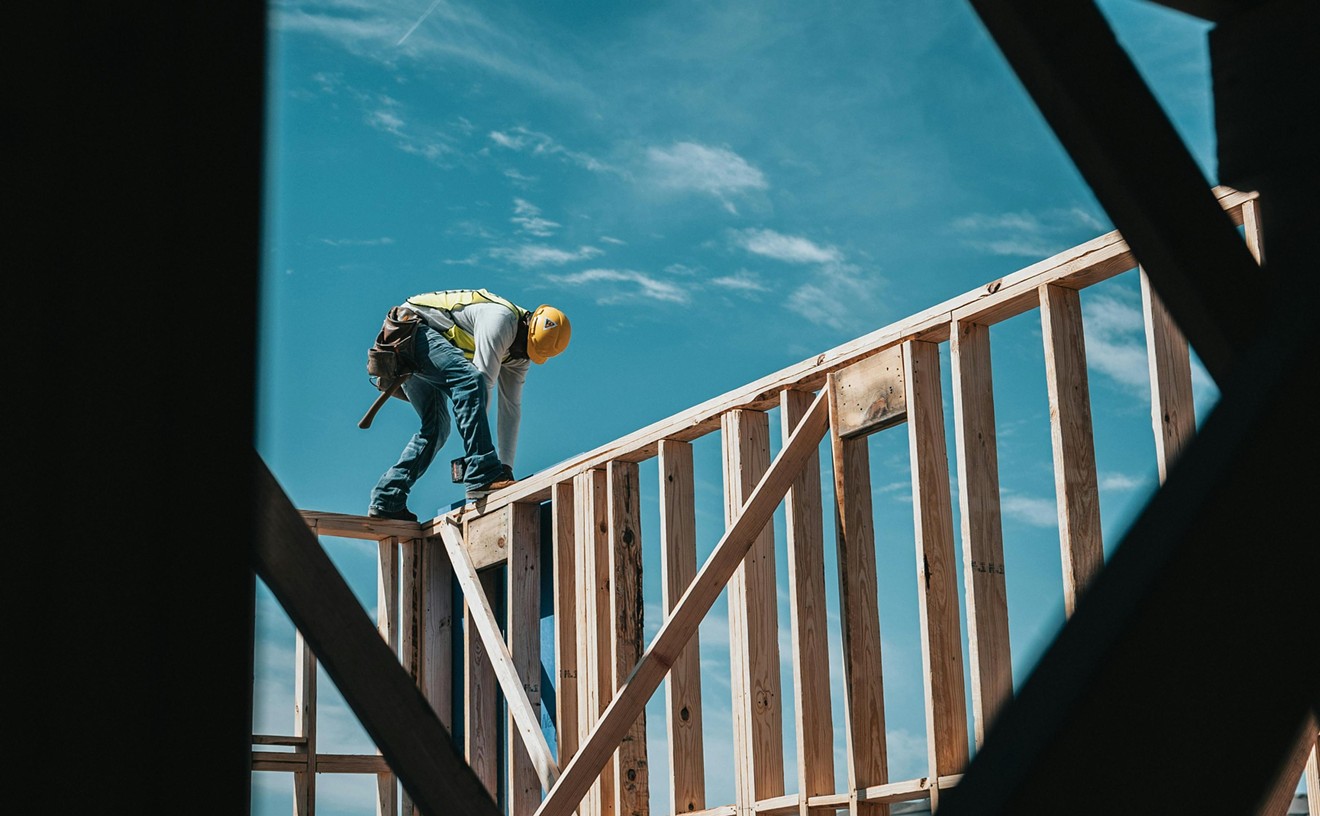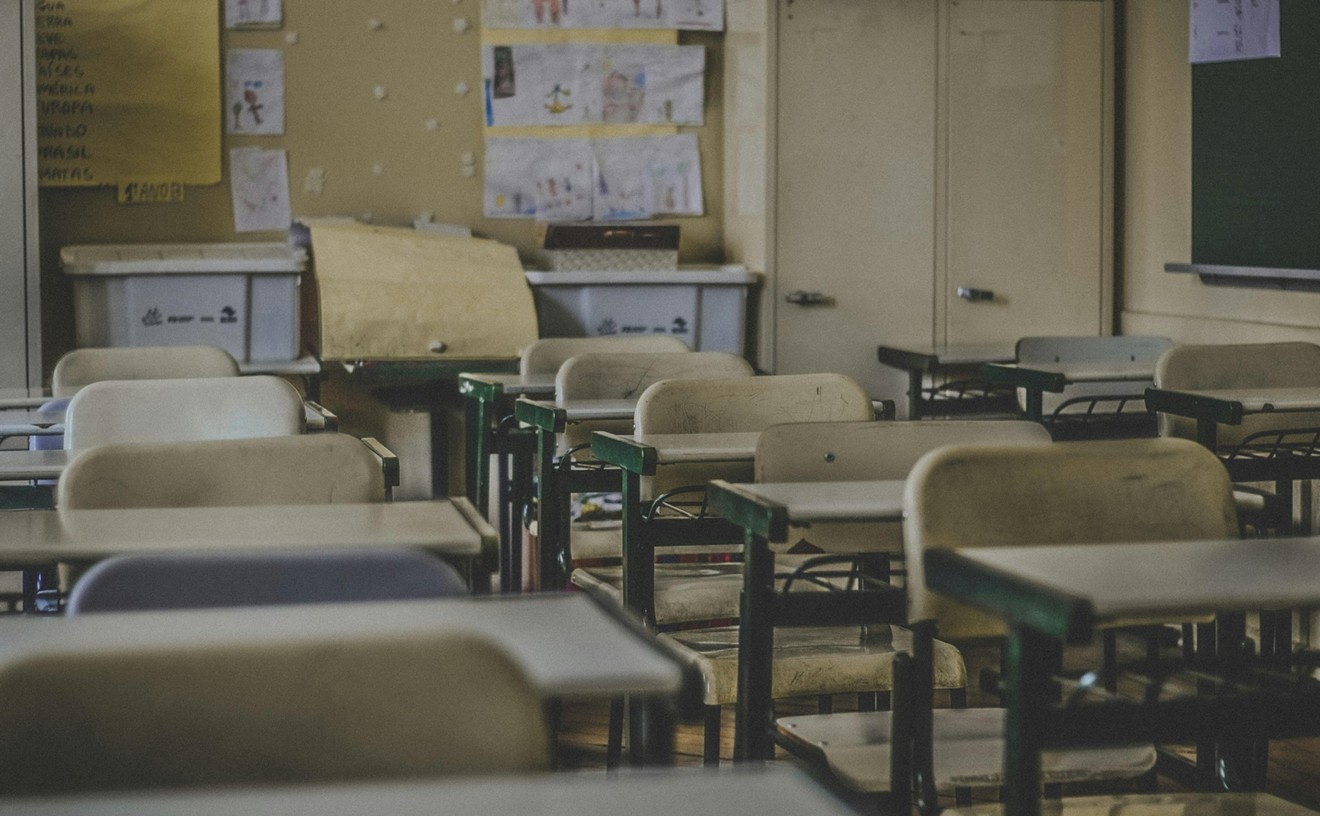A peaceful protest in Dallas against police brutality ended with hundreds of demonstrators, their hands zip-tied behind their backs, being detained by police on the Margaret Hunt Hill Bridge.
As they lay on their stomachs waiting for instructions, one protester yelled repeatedly, “We can’t win!”
A last-minute change Monday night put the rally, organized by local activist group Next Generation Action Network, in front of the Frank Crowley Courthouse Building. Dominique Alexander, the group’s founder, told the protesters the area was not in the 7 p.m. curfew zone recently implemented by the city of Dallas.
“Coming to this location, I would not put any of you in danger,” Alexander says.
Around 7 p.m., as officers gathered across the street, Alexander introduced Shenita Cleveland, a business owner and community leader who is running for Congress. She was one of the demonstrators arrested the day before in Dallas for violating the curfew covering downtown. She livestreamed her arrest on Facebook. Cleveland and several others instructed the protesters on what to do in the event of their arrest.
“We initially violated the curfew — Class C misdemeanor. They said that we were going to get a ticket and be released,” Cleveland says. “But they enhanced it, and they lied, so just know when you get caught up that inside of there, inside of Dallas County, inside there in that jail, it’s a long, drawn-out and tedious process.”
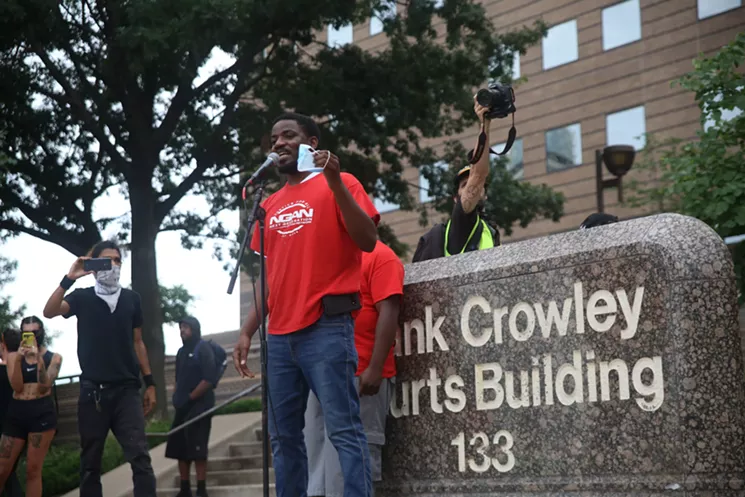
Founder of Next Generation Action Network Dominique Alexander speaks to several hundred people during a rally against police brutality at the Frank Crowley Courthouse Building June 1
Jacob Vaughn
“I don’t know why it’s now, but it’s just been a buildup, and I finally told myself ‘You can sit here and say you’re upset about it, but you need to show it,’” she said.
While she has not had run-ins with police herself, she said police brutality and racial profiling is something her family and friends have faced.
“I haven’t had some of these experiences that some of these people have had, but that doesn’t make it any less important. Just because I myself haven’t lived it doesn’t mean it’s not actually happening,” she said. “My older family members have [been affected]. It might have happened 20 years ago, but it’s still relevant.”
The crowd of people lit up when Pamela Grayson, a longtime activist, stepped up to speak. She said while recent protests across the country were sparked by the death of George Floyd, who died after begging for breath as a white officer knelt on his neck in Minneapolis, the demonstrations are for all victims of police brutality.

At a rally against police brutality, activist Pamela Grayson said George Floyd is the straw that broke the camel's back.
Jacob Vaughn
“George was the straw that broke the camel’s back,” Grayson said.
One of the last speakers before the protesters began marching, activist Carlos Quintanilla, echoed Grayson’s sentiments.
“They ask us ‘Why are you protesting in Dallas when George Floyd got killed in Minneapolis?’” he said. “My answer is Atatiana Jefferson, Botham Jean, José Cruz, Michael Ramos, Sandra Bland. That’s why we’re protesting.”
Around 8:30 p.m., the protesters walked onto Riverfront Boulevard. Before going much farther, they all stopped to take a knee and sat in silence. Then, they advanced toward the Margaret Hunt Hill Bridge.
As they made their way toward the bridge, they passed by a Dallas Police Department SWAT vehicle. Officers surrounded it. One repeated over a speaker, “Do not approach the officers.” The protesters could see officers in front of them in the distance as they took their first steps on the bridge.
The protesters yelled, “Hands up, don’t shoot! Hands up, don’t shoot!” as they walked closer to the other end of the bridge where the officers were waiting for them. Several muffled pops sounded, sparks flew and the protesters began running in the opposite direction. The group of law enforcement officers, which included DPD, the Texas National Guard and Texas Highway Patrol troopers, advanced.
Some demonstrators were carried away from the crowd for medical attention, while others tried to stand their ground. A cloud of smoke hovered in between the protesters and the officers. Then, more muffled pops sounded and more sparks flew, pushing them further back, but officers were coming from that direction too.
Suddenly, a police helicopter hovering overhead shined its light on the protesters on the bridge. By now, they were closed in by a wall of officers on either side of them.
“Get on your stomach and put your hands behind your back,” an officer said over a speaker.
Some protesters refused to lie down at first. Some began trying to jump on the other side of the bridge to avoid getting hit by projectiles.
“We are here to peacefully assemble! We are here to peacefully assemble!” Alexander repeated through the commotion.
For about the next hour, officers were busy zip-tying protesters’ hands behind their backs, getting their information and loading them into several Dallas Area Rapid Transit buses. Alexander was also taken away with his hands behind his back.
As this happened, there was a lot of confusion as to whether the protesters were going to be arrested and charged. Some officers said the protesters were just being detained. Others were told they were being arrested and charged with obstructing a roadway.
However, by around 11 p.m., protesters were being dropped back off at the Frank Crowley Courthouse.
Dallas Judge Clay Jenkins later said in a tweet, "The protesters are headed back to the Crowley Courthouse and then to their cars. I'm thankful."
By the time they were back at the courthouse, the area was in the curfew zone and officers were telling people to call their rides and leave.
Quintanilla said he was relieved when DPD took over the situation on the bridge from the other law enforcement officers.
"The [Dallas Police] officers acted in a very professional manner," Quintanillas said. "I'll tell you who were very aggressive, the state police officers. Dallas police officers, once they took control of the situation, it changed drastically."
Two other protesters who did not give their names said they had been taken to the police station, but were later brought back to the courthouse because the police didn't have the capacity to jail everyone.
One of the protesters who was detained, Rubin Sasavi, sat on the steps in front of the courthouse waiting for his friends to be released. He said an officer told him no one was going to jail. As he was being detained, he said all he felt was anger.
"I sort of lost that sense of anxiety and just accepted whatever happens happens," he said.
No matter what happened, Sasavi said he would be ready to keep protesting against police brutality.

